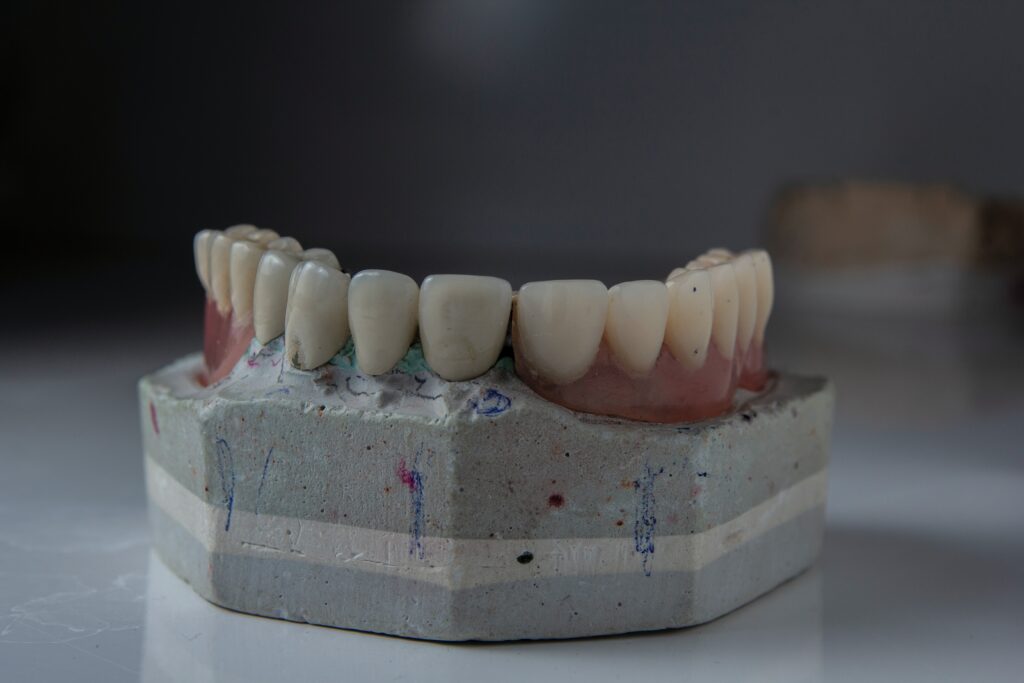
Overcome root canal pain with ease! Discover the truth about discomfort and find your perfect dentist for a pain-free experience.
When it comes to dental health, understanding root canal treatment is essential, especially if you’re experiencing tooth pain or discomfort. This section will cover the basics of what a root canal is, the reasons why you might need one, and the importance of this dental procedure.
A root canal refers to the space within the root of a tooth that contains soft tissue known as the dental pulp. The dental pulp consists of nerves, blood vessels, and connective tissue that play a vital role during the tooth’s development. However, once a tooth is fully matured, the dental pulp is no longer essential for its function.
A root canal treatment is a dental procedure that involves removing the infected or damaged dental pulp from the tooth. The pulp is carefully cleaned and disinfected before being filled with a biocompatible material. This process helps to alleviate pain, prevent further infection, and save the natural tooth.
Several factors can lead to the need for a root canal treatment. The most common reasons include:
Root canal treatment is crucial for several reasons. Firstly, it helps to relieve pain and discomfort caused by infected or damaged dental pulp. By removing the source of the pain, root canal treatment can provide significant relief and improve your overall dental health.
Secondly, root canal treatment preserves the natural tooth. Saving your natural tooth is always preferable to extraction, as it allows you to maintain proper tooth function and prevents potential issues that may arise from tooth loss, such as shifting of adjacent teeth or difficulties with chewing and speaking.
Lastly, root canal treatment prevents the spread of infection. By removing the infected dental pulp and thoroughly cleaning the root canal space, the procedure eliminates the source of infection and prevents it from spreading further. This is crucial for maintaining your oral health and preventing potential complications.
Understanding the basics of root canal treatment is the first step towards overcoming any concerns or fears you may have about the procedure. By addressing the underlying issues causing tooth pain or discomfort, root canal treatment can help you regain comfort and maintain a healthy smile.
If you’re considering root canal treatment for a dental issue, you might have come across the common misconception that root canals are extremely painful. However, it’s important to dispel this myth and understand the reality of root canal procedures.
Contrary to popular belief, root canal treatment is not inherently painful. In fact, the purpose of a root canal is to alleviate pain caused by an infected or damaged tooth. The procedure involves removing the infected pulp from the tooth, which eliminates the source of the pain.
Advancements in modern dentistry techniques and technology have contributed to making root canal treatments more comfortable than ever before. Dentists now use local anesthesia to numb the area being treated, ensuring that you won’t experience any pain during the procedure. For individuals who experience anxiety or fear, sedation options may also be available to help you feel more relaxed and comfortable.
It’s important to remember that each person’s pain tolerance and experience may vary. However, it’s rare for patients to report significant pain during a root canal. The discomfort that may be associated with the procedure is usually manageable and temporary.
Modern dental practices prioritize patient comfort and strive to provide pain-free root canal treatments. Dentists use advanced techniques and equipment to ensure that the procedure is as painless as possible. With the use of local anesthesia and sedation options, the focus is on ensuring that you have a comfortable experience throughout the process.
During the root canal process, your dentist will take the necessary steps to ensure you are comfortable. This includes evaluating and diagnosing the tooth, numbing the area with anesthesia, and thoroughly cleaning and filling the root canal. The tooth will then be restored to its proper function and appearance.
By choosing a qualified and experienced dentist who specializes in root canal treatments, you can further increase your comfort and peace of mind. Reading reviews and seeking recommendations can also help you find a dentist who prioritizes patient care and delivers exceptional results.
Remember, the goal of root canal treatment is to relieve pain and save your natural tooth. By dispelling the myth of root canal pain and understanding the advancements in modern dentistry, you can approach the procedure with confidence and ease. If you have any concerns or questions about your specific case, it’s best to consult with a dental professional who can provide personalized guidance and address your individual needs.

Photo by Ozkan Guner on Unsplash
When undergoing a root canal treatment, it’s helpful to understand the various stages involved in the procedure. The root canal process typically includes evaluation and diagnosis, numbing and anesthesia, cleaning and filling the canal, and restoring the tooth.
Before starting the root canal treatment, your dentist will evaluate the condition of your tooth. They will examine the affected tooth, assess the extent of the damage or infection, and may take X-rays to get a better view of the root canal system. This evaluation helps the dentist determine if a root canal is necessary and if any additional procedures, such as a dental crown, may be required after the treatment. If you’re experiencing symptoms such as persistent toothache or sensitivity, it’s important to consult with a dentist to evaluate the need for a root canal.
To ensure your comfort during the procedure, your dentist will administer local anesthesia to numb the area around the affected tooth. This ensures that you won’t feel any pain or discomfort during the root canal treatment. In some cases, your dentist may also offer additional sedation options to help you relax during the procedure. These options can be discussed with your dentist to determine the best approach for your specific needs.
Once the numbing has taken effect, your dentist will begin the root canal treatment by accessing the inside of the tooth. Using specialized dental instruments, they will carefully remove the infected or damaged pulp from the root canal. The root canal will then be thoroughly cleaned and disinfected to eliminate any remaining bacteria or debris. After cleaning, the dentist will fill the canal with a biocompatible material called gutta-percha to seal it and prevent further infection.
After the root canal treatment, it’s important to protect and restore the tooth’s structure. In many cases, a dental crown is placed over the treated tooth to provide strength and support. The crown not only restores the appearance of the tooth but also protects it from further damage. Your dentist will discuss the best restoration option for your tooth and provide guidance on the aftercare and maintenance required.
Throughout the root canal process, your dentist will ensure your comfort and safety. They will use advanced techniques and modern dentistry practices to minimize any discomfort or pain associated with the treatment. It’s essential to choose a qualified and experienced dentist who specializes in root canal procedures. To find the right dentist for your root canal treatment, consider factors such as their qualifications, experience, and patient reviews. A dentist who prioritizes clear communication and makes you feel comfortable during the process can help alleviate any concerns you may have.
Understanding the various stages of the root canal process can help you feel more at ease when undergoing this dental treatment. If you have any questions or concerns about the root canal treatment, consult with a dental professional who can provide personalized guidance based on your specific needs.
Undergoing a root canal treatment can cause anxiety, especially when it comes to concerns about pain. However, modern dentistry has made significant advancements in managing discomfort during and after the procedure. Here are some ways to make your root canal experience as comfortable as possible:
To ensure a pain-free root canal treatment, your dentist will administer local anesthesia. This numbs the area around the tooth, preventing you from feeling any pain during the procedure. The dentist may also offer sedation options to help you relax and minimize any anxiety you may have. These can include oral sedatives or nitrous oxide (laughing gas), which induce a state of relaxation and reduce discomfort.
After the root canal treatment, it’s normal to experience some discomfort as the anesthesia wears off. Your dentist will provide you with guidelines for post-treatment care and pain management. These may include taking over-the-counter pain relievers, such as ibuprofen, as directed. It’s important to follow the instructions given by your dentist and take any prescribed medications as advised.
To alleviate discomfort and reduce swelling, you can apply an ice pack or cold compress to the outside of your cheek for short periods. This can help numb the area and reduce inflammation. It’s essential to avoid chewing on the treated tooth until it’s fully restored to prevent any potential damage.
During the healing process, you may experience some common side effects such as sensitivity to hot or cold temperatures, mild swelling, and occasional discomfort. These side effects are temporary and should subside within a few days to a week. If you experience severe pain, excessive swelling, or prolonged discomfort, it’s important to contact your dentist for further evaluation.
To manage sensitivity, avoid consuming extremely hot or cold foods and drinks. Opt for lukewarm or room temperature options instead. Using a toothpaste formulated for sensitive teeth can also help alleviate discomfort.
Remember, each individual’s experience may vary, and it’s important to communicate any concerns or questions you may have with your dentist. They are there to ensure your comfort throughout the root canal process. For more information on root canal treatments, visit our article on root canal treatment.
By understanding the options available to manage discomfort during and after a root canal treatment, you can approach the procedure with confidence and ease. Trust in the expertise of your dentist and follow their recommendations for post-treatment care to ensure a smooth recovery.
When it comes to undergoing a root canal treatment, finding the right dentist is essential to ensure a comfortable and successful experience. Here are some key factors to consider when selecting a dentist for your root canal:
Start by researching the qualifications and experience of potential dentists. Look for dentists who specialize in endodontics, the branch of dentistry that focuses on root canal treatments. Dentists with advanced training and experience in performing root canals are more likely to provide high-quality care. Consider checking if the dentist has any additional certifications or memberships in professional organizations related to endodontics.
Effective communication is crucial in any dental procedure, especially when it comes to root canals. A dentist who takes the time to listen to your concerns and explain the treatment process in a clear and understandable manner can help alleviate any anxiety or apprehension you may have. Look for a dentist who values patient comfort and is willing to address any questions or concerns you may have.
Reading reviews and seeking recommendations from friends, family, or trusted sources can provide valuable insights into the quality of care provided by different dentists. Look for testimonials that specifically mention root canal treatments and the overall patient experience. Consider visiting dental review websites or social media platforms to gather more information about the dentists you are considering.
Remember that finding the right dentist for your root canal is a personal decision. Take the time to research and compare different dentists based on their qualifications, experience, communication skills, and patient reviews. By choosing a skilled and compassionate dentist, you can increase the chances of a successful root canal treatment and a positive dental experience.
If you’re looking for more information about root canal treatments, check out our article on root canal treatment.